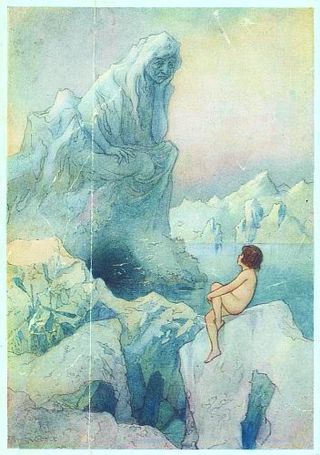Related Research Articles

Giambattista Basile was an Italian poet, courtier, and fairy tale collector. His collections include the oldest recorded forms of many well-known European fairy tales. He is chiefly remembered for writing the collection of Neapolitan fairy tales known as Il Pentamerone.

The Pentamerone, subtitled Lo cunto de li cunti, is a seventeenth-century Neapolitan fairy tale collection by Italian poet and courtier Giambattista Basile.

"Petrosinella" is a Neapolitan literary fairy tale, written by Giambattista Basile in his collection of fairy tales in 1634, Lo cunto de li cunti, or Pentamerone.
Cannetella is a Neapolitan literary fairy tale told by Giambattista Basile in his 1634 work, the Pentamerone. Andrew Lang included it in The Grey Fairy Book, as collected by Hermann Kletke.

Warwick Goble was a British illustrator of children's books.
The Goat-faced Girl is an Italian fairy tale. Giambattista Basile included a version in his Pentamerone (1634-1636). Andrew Lang included a version, collected by Hermann Kletke, in The Grey Fairy Book (1900).
"The She-bear" is an Italian literary fairy tale, written by Giambattista Basile in his 1634 work, the Pentamerone.
"The Myrtle" is an Italian literary fairy tale written by Giambattista Basile in his 1634 work, the Pentamerone.
The Flea is an Italian literary fairy tale written by Giambattista Basile in his 1634 work, the Pentamerone.
Pintosmalto or Pinto Smauto is an Italian literary fairy tale written by Giambattista Basile in his 1634 work, the Pentamerone.
The Months is an Italian literary fairy tale written by Giambattista Basile in his 1634 work, the Pentamerone.
The Enchanted Snake or The Snake is an Italian fairy tale. Giambattista Basile wrote a variant in the Pentamerone. Andrew Lang drew upon this variant, for inclusion in The Green Fairy Book.
The Merchant is an Italian literary fairy tale written by Giambattista Basile in his 1634 work, the Pentamerone.
The Dove is an Italian literary fairy tale written by Giambattista Basile in his 1634 work, the Pentamerone.
"Corvetto" is an Italian literary fairy tale written by Giambattista Basile in his 1634 work, the "Pentamerone".
The Raven is an Italian literary fairy tale written by Giambattista Basile in his 1634 work, the Pentamerone. The story is a man winning a bride for his brother the king, and then having to protect the couple from perils that he can not tell anyone about, without being turned to stone.
"The Three Fairies" is an Italian literary fairy tale written by Giambattista Basile in his 1634 work, the Pentamerone.
The Love for Three Oranges is a 1919 opera by Sergei Prokofiev.
The Dragon is an Italian literary fairy tale, included in Giambattista Basile's Pentamerone, first published 1635. In the English language, the tale was a selection in Thomas Keightley's Fairy Mythology (1828), and later appeared in John Edward Taylor 's translation of the entire work, The Pentamerone, or, The Story of Stories, Fun for the Little Ones (1848). The tale has been classed as a version of Aarne–Thompson type 462 "the outcast queens and the ogress queen", rather than as "the dragon-slayer". It exhibits folklore motif K873, "fatal deception by giving narcotic."

Tale of Tales is a 2015 European fantasy horror film co-written, directed and co-produced by Matteo Garrone and starring Salma Hayek, Vincent Cassel, Toby Jones, and John C. Reilly.
References
- ↑ Project Gutenberg's Stories from Pentamerone, by Giambattista Basile: XII Violet. March 1, 2009. Retrieved May 13, 2017– via Project Gutenberg.